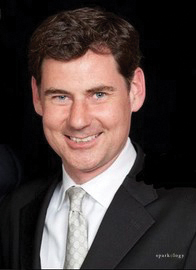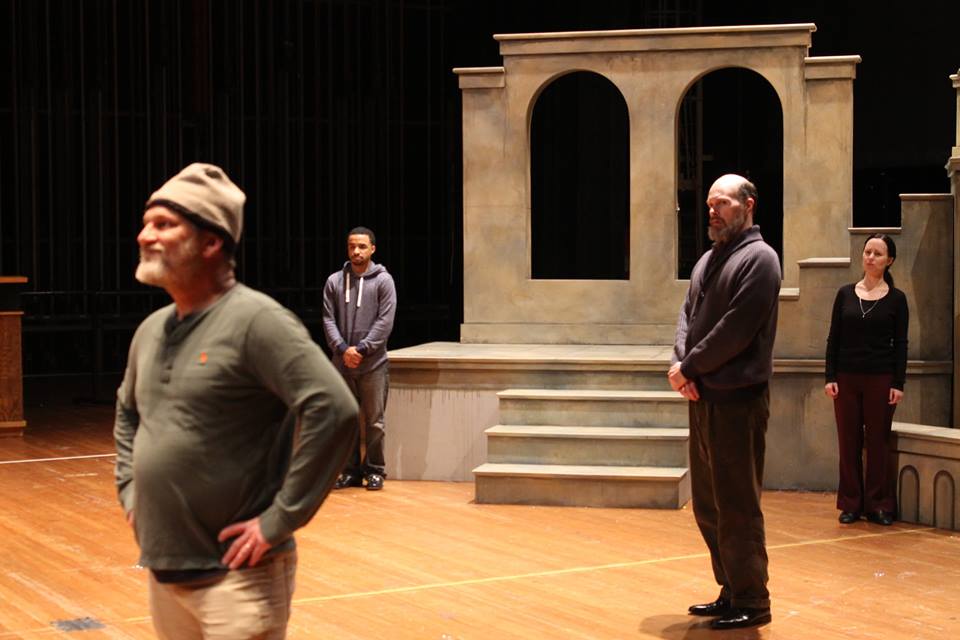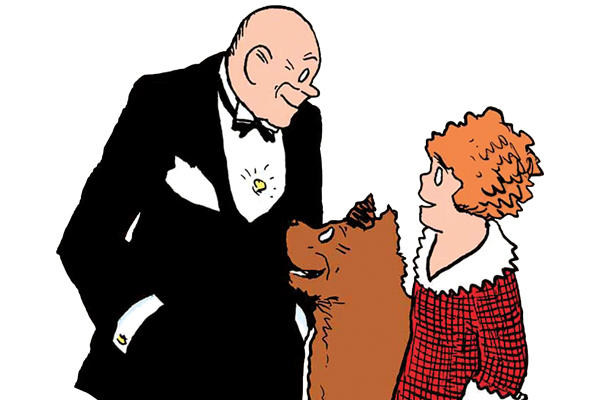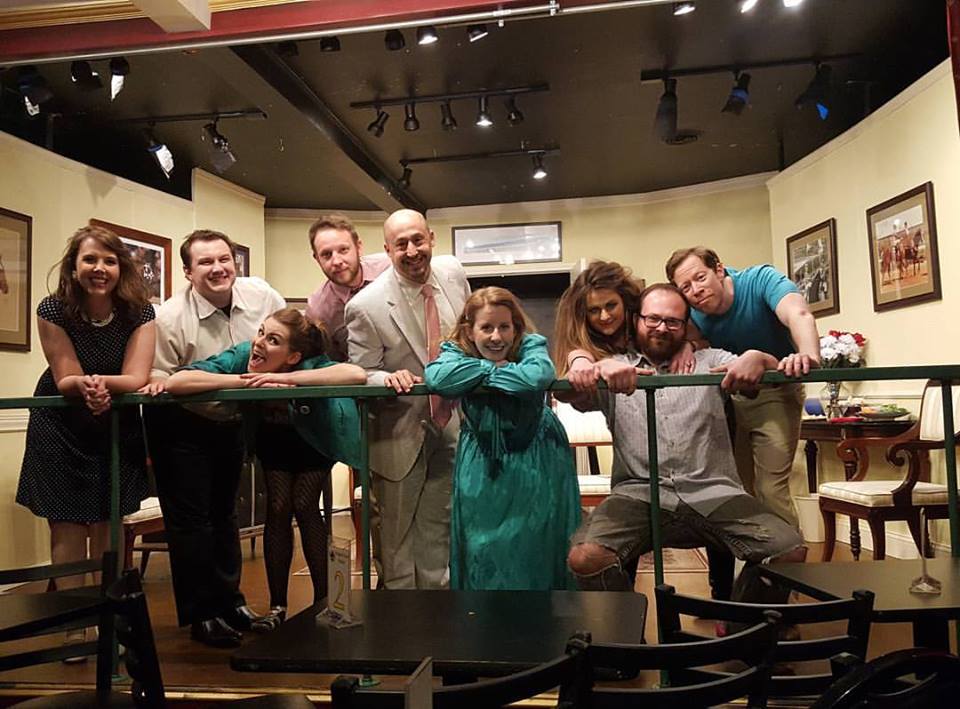Interview with Cabaret Tour Director BT McNichol
By Scott Dowd
Entire contents copyright © 2016 Fearless Designs. All rights reserved.
In 1993, Sam Mendes created what many feel is the definitive interpretation of Kander and Ebb’s musical Cabaret at the Donmar Warehouse in London’s West End. Five years later, the Roundabout Theatre resurrected the Mendes production for Broadway with Rob Marshall as choreographer and co-director. It is this version that tour director BT McNicholl will bring to North America as part of the Roundabout Theatre’s fiftieth anniversary season. The tour director is responsible for ensuring that the vision of the original production remains intact through its many iterations in theatre after theatre, night after night. It is a daunting task, but one for which McNicholl is well-suited. An acclaimed lyricist whose Jazz Age show The It Girl has received international attention, he also shared the Helpmann Award (The Australian equivalent of a Tony) with Mendes and Marshall for this new production of Cabaret.
Scott Dowd: For most people, your work as a lyricist and director of the Cabaret tour might be enough, but you are also the producing artistic director at the historic Palace Theatre in Stamford, Connecticut!
BT McNicholl: I have a lot going on.
SD: Is the Palace a presenting venue or a producing venue for the most part?
BTM: We are actually doing more of both now. Theatrical Rights Worldwide, which holds the rights to Jersey Boys, Memphis, Million Dollar Quartet, among others, will be developing three new musicals a year at the Palace starting in 2016. But we are also already developing new work here, so I am excited about the new works we are creating and those to come.
SD: What is happening with your musical The It Girl?
BTM: The It Girl had its Canadian premiere in Vancouver in October and it was a such huge hit, they are already talking about bringing it back.
SD: The It Girl is a Jazz Age musical set just a few years before Cabaret. What are your thoughts on the differences and similarities between those two works and the changes in the world during that time.
BTM: The It Girl is set in 1927 America, whereas Cabaret is set in 1930 Berlin. The historical differences are very interesting between the two countries at that time. In fact, in terms of the plot, there are some very good parallels in cause and effect. Jazz Age America was a period of exponential economic growth and isolationism. There was an attempt to forget the war and everything that came with it. The exuberant America of the 1920s was a direct reaction to the horrors of World War I. They wanted to distance themselves from it and they wanted to party. Everyone was getting rich, and good times were here to stay.
SD: That was a reasonable argument.
BTM: At the same time in Germany, it was quite the opposite. They had been defeated in the war. They had been humiliated in the aftermath of the war. They were told they had to pay reparations which, by the way, Germany only paid off two years ago.
SD: The Treaty of Versailles was very hard on Germany and its allies. The Reparations Commission originally came up with a figure of more than one hundred billion gold Deutsch Marks.
BTM: Germany was impoverished after the war. They needed a lot of American investment. Much of the initial reparations were actually made with loans from New York banks. Germany experienced a concomitant inflation and the price of consumer goods became astronomical. As opposed to post-war America, which had an established two-party political system, Germany changed governments frequently. Many different grassroots parties were vying for position. Even with the decadence of the Moderns of the Jazz Age, who were confined mainly to the cities, America was much more sexually conservative than Germany. Berlin, in particular, was known as the most sexually liberated and experimental city in Europe—even more so than Paris. Once the U.S. depression hit in October 1929, those foreign investments Germany had relied on began to dry up. Within a year, they found themselves in a very bad way. American money was very important in Europe at the time. There are stories of Americans throwing coins on the ground in clubs to watch the women scramble for them. It was a very bleak time in Berlin, Germany, as well as the rest of Europe.
SD: Understandably, since there had been nothing before U.S. investment. And this is the time frame in which most of the Cabaret story takes place.
BTM: Exactly. It had been very unstable prior to that influx of capitol. The seeds were then sown for Hitler’s rise. He had a wrecked economy and a humiliated population looking for someone to blame. He looked to the fringes of society and the subculture—primarily Jews, homosexuals and gypsies—and the rest we all know. That’s a very simplified version, but you can see how America in the 1920s and The It Girl is the opposite of Berlin at the same time. It’s easy to see how America’s fortunes impacted Berlin in the early 1930s and helped to create the environment in which evil like that can take root and grow.
SD: We see the same things happening now. Any time there is a vacuum of power, somebody is going to fill it. It was that way in the 1960s when Cabaret opened. It was that way in the 1990s when it was revived, and now it is even more profound!
BTM: On the first day of rehearsals for Cabaret in 1965, Hal Prince got the cast together and showed them a picture of bare-chested, young, white men with blonde hair being violent and throwing things. He said, “It looks like Germany in the 1930s but, in fact, it’s America in the 1960s.” His point being that what happened there then, can happen here now.
SD: Exactly.
BTM: That was the reason he did the show. As Kander and Ebb found out with Chicago, greed and celebrity are always in style. In the same way, Cabaret is always current because, unfortunately, it deals with issues that are still relevant—power, racism, oppression and how they influence who is in power. Sam Mendes has said, “The central question of Cabaret is the central question of the Twentieth Century: ‘How did Hitler come to power? How was that ever allowed to happen?’” While Cabaret can’t answer those questions entirely, the show does address them in its own way. The German people deserved a legitimate political party to lead them out of the darkness. Instead, they got the Nazis.
SD: It makes you wonder about the mindset of the people who acquiesced to their leadership and those who actively embraced it.
BTM: There are some very interesting studies on that subject. At the end of the war after everything that happened, there was a high percentage of Germans, like 40 to 50 percent, who felt National Socialism was a good idea that had gone wrong.
SD: It seemed like a good idea at the time.
BTM: Essentially, yes. Unfortunately, as you say, this still goes on and that is why Cabaret still has such a strong impact on audiences. It is still relevant politically. Fortunately for us, there are also two great love stories at the center of it. Cabaret shows how historical truth intersects with the narrative of these two imagined love stories. That is what makes it so compelling and current. It feels like the ink is still drying on the pages when you perform it. Cabaret has the currency that leaves people amazed and astounded at every performance. Of course, Sam Mendes and Rob Marshall’s production makes it feel very current and contemporary.
SD: The New York revival just closed in September and, by all accounts, this is another outstanding incarnation.
BTM: Yes, even though this revival comes more than a decade after the last revival, I think it is as good as ever.
SD: You mentioned Chicago earlier and, like that revival, the 1993 revival of Cabaret was visually very exciting. William Ivey Long did the costumes again this time. Has he made many changes?
BTM: One of William Ivey Long’s strengths is making the costumes feel particular to the actors playing the roles. One of the things that is different in this production is that the older couple—Fraulein Schneider and Herr Schulz—are played slightly younger than they were originally.
SD: What was the thinking behind that?
BTM: Well, if the characters are slightly younger, they are still in the generative stage of their development and lose even more if the threat of Nazism is allowed to tear them apart. Beyond that, William reinvents the show every time he does it!
SD: You are less than two months away from the Rhode Island opening of the tour. Are you already in rehearsals?
BTM: Rehearsals for this tour will begin December 28.
SD: You’ll have just about a month before the show goes on the road. Is that a typical rehearsal schedule?
BTM: That is about normal for tours. The design team has everything in place, so we just need to bring the actors into this world.
SD: This is a pretty physical show. Was it difficult to cast?
BTM: Very hard, because most of them, especially the ensemble people, have to act, sing, dance and play a musical instrument because they are also the orchestra. There are five professional musicians who go with the show to round out the sound, but most of the orchestra is on stage.
SD: This revival just closed at Studio 54, which was one of the innovations made for the 1993 revival—performing in an actual cabaret space, with people at tables eating and drinking. Will that happen on this tour?
BTM: No, we won’t have cabaret seating, but it doesn’t matter. We did this production twice in Paris. There was a two-year run at the Folies-Bergère, which was the longest- running American musical in Paris at the time. Three years later there was such demand that we brought it back for a tour—the first American musical to tour Paris in this way. I saw it in Paris, in French, using the same set we are using on this tour. We were in a 3,000-seat venue and during the last scene in the show—which has no music in it— you could have heard a pin drop. The audience was riveted. The reaction at the end was the same reaction we got at Studio 54. It was the same reaction we got at the Donmar Warehouse in London with only 220 seats. Whether it is a small house or a 3,000-seat venue, whether it is English or French, it doesn’t matter. This production of Cabaret reaches right to the last row. Its message comes through and the vision comes through because Sam found a metaphor. He said, “In order to show how Nazism could happen, I needed to create a world in which you are part of the show.” It seduces you. You come in, you have drinks, you party, you are having a great time—the emcee is fun—and you become complicit. You become part of the show, enjoying its decadence without a care for the world outside. Then midway through the second act, the doors slam behind you and the show makes a quick turn and you are on a fast toboggan ride to hell wondering how you got here. I think that was the experience a lot of people had at that time in Germany and in the decade that followed. That’s what makes the show so amazing—you live vicariously through the play and begin to understand how this could happen.
SD: They danced right into it.
BTM: Exactly.
SD: The decadence of Cabaret is inherent, as you have said. So it’s not really a show for the whole family?
BTM: No, but I would think teens and older should be able to appreciate the show. It is important that young people hear what this show has to say about their world and how it works.
PNC Broadway in Louisville’s presentation of The Roundabout Theatre Sam Mendes and Rob Marshall production of Cabaret
March 8 – 13, 2016
Kentucky Center
501 West Main Street
Louisville, KY 40202
Tickets go on sale January 21.
Call 502.584.7777, or online at kentuckycenter.org.
Scott Dowd has a wealth of experience working within and commenting upon the arts scene in Louisville. He has been involved with Kentucky Opera, the Louisville Orchestra, and Louisville Public Media. His talents and experience include: Actor; Director; Singer; Musician; Radio and Television Interviewer; Classical and News Jock; Public Speaking; Public Relations; Marketing; Development; Writer; Substantive Editor. He currently serves on the Board for Arts-Louisville.com.






